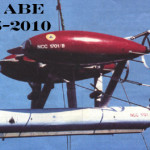NEPTUNE is more than just a planet…a clever acronym for the North-East Pacific Time-Series Undersea Networked Experiments. The U.S. Canadian venture is series of cable-linked seafloor observatories, purported to be the world’s largest. The project will lay 3,000 km of powered fibre optic cable over a 200,000 sq km region in the northeast Pacific. The network will contain several scientific nodes that can be controlled and monitored from land. There are four major research themes including: the structure and seismic behaviour of the ocean crust, seabed chemistry and geology, ocean climate change and its effects on marine life at all depths, and the diversity of deep sea ecosystems. NEPTUNE is expected to begin operation following installation of two test networks, VENUS (Victoria Experimental Network Under the Sea) project off the southern British Columbia coast led by the University of Victoria and MARS (Monterey Accelerated Research System) project off Monterey, California led by MBARI. To date, NEPTUNE Canada has completed the lay of an 800 km ring of powered fibre optic cable on the seabed over the northern part of the Juan de Fuca tectonic plate, a 200,000 sq km region in the northeast Pacific off the coasts of British Columbia, Washington and Oregon.

The Monterey Accelerated Research System (MARS) is a cabled observatory that can provide “remote, continuous, long-term, high-power, large-bandwidth infrastructure for multidisciplinary, in situ exploration, observation, and experimentation in the deep sea.” The MARS system was designed and engineered here at the Monterey Bay Aquarium Research Institute (MBARI) and is located off Monterey Canyon. The systems includcs a science node on 51 km of submarine cable (laid this year) with expansion capability for more nodes in the future. The node providese 8 science ports, with a 100-Mbit-persecond, bi-directional telemetry channel and 10 kW of power. “Extension” cables can be from the ports can provide power and communications up to 4 km away.

And in words too articulate to put in my own…
“The broader implication of installing MARS is that the oceanographic community will be a giant step closer to providing real-time, continuous access to unprecedented power and communications capability underwater on a regional scale. This type of ocean observatory will revolutionize the way researchers study the ocean and the seafloor beneath. Benefits will include more cost-effective collection of much larger amounts of integrated, multidisciplinary data relevant to important scientific and societal issues, such as natural hazards, the climate system, the carbon cycle, and other biologically-mediated processes in the ocean. In addition, researchers will use such facilities to explore entirely new classes of problems currently unapproachable with existing assets.”
In addittion, Peter and I, in behalf of DSN, are initiating our own network called PLUTO (Painfully Limited, Underfunded, Technical Observatory).





